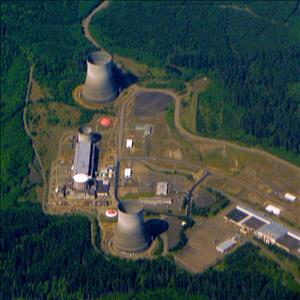In 1972, Tacoma joins in construction of two nuclear power plants under construction by the Washington Public Power Supply System -- WPPSS -- in Hanford and at Satsop in Grays Harbor County. The move comes at a time when large-scale hydroelectric development had ended and utilities were turning to thermal sources -- coal, natural gas, and nuclear -- for energy. These reactors and two others will never be built because of massive cost overruns.
WPPSS was a governmental coalition organized in 1957 among publicly owned electrical utilities in Washington to share the costs of building new generating facilities. In the 1960s, planners told the utilities that the demand for electricity would double every 10 years. All the best hydroelectric sites had been exploited and environmental objections blocked any new projects. WPPSS started construction on two nuclear reactors, the cost to be paid by the sale of the power to consumers. In 1975, the system started two more plants -- 4 and 5 -- paired with the first two. Tacoma joined in these projects as well.
In addition to concerns about the safety and cost effectiveness of nuclear power, costs of the four plants grew. By 1979, the plants were 18 months behind schedule and the price had doubled due to mismanagement. In 1982, the WPPSS board suspended work on plants 4 and 5. Plants 1 and 3 were mothballed too, and finally cancelled. WPPSS defaulted on $2.25 billion in bonds. Tacoma paid $40.3 million to settle its share of the debacle. That was passed along to ratepayers in April 1983 as a 15 percent surcharge.
One nuclear power plant, WPPSS 2 – the Columbia Generating Station -- produced power. WPPSS later renamed itself Energy Northwest.

